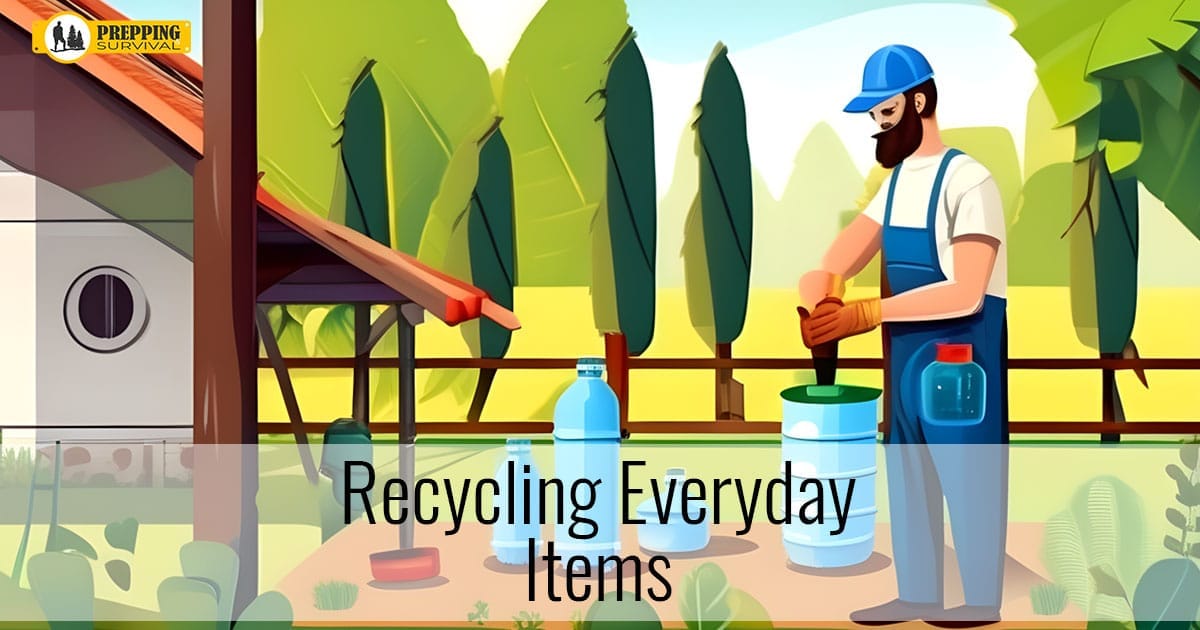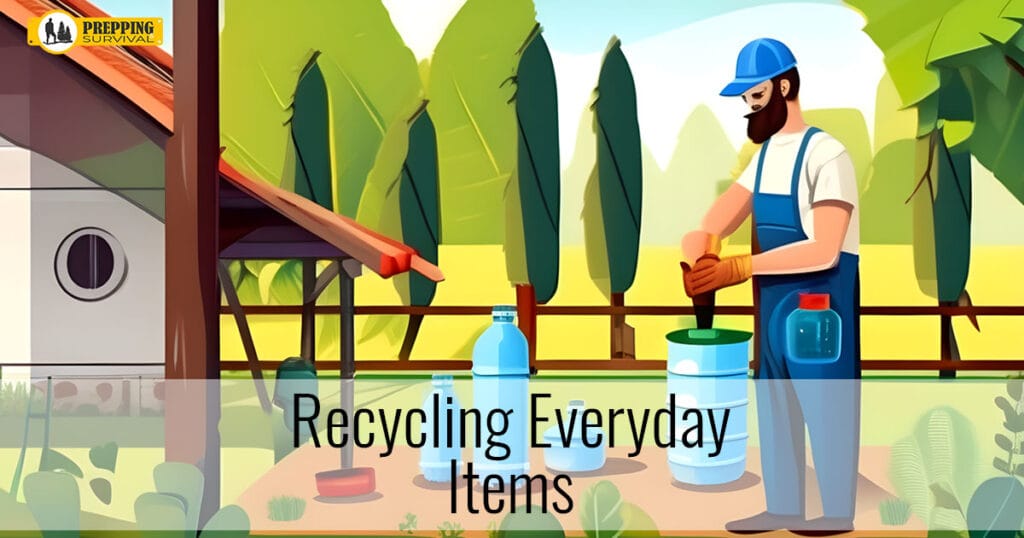Cyber threats aren’t just “out there” anymore—they’re part of everyday life. From fake emails trying to trick you into clicking a link, to criminals locking up a company’s files for ransom, the dangers are real and constant.

Approx reading time: 3 minutes

Upcycling and repurposing everyday items for survival is not just a cost-effective approch to prepping; it’s a mindset that turns potential waste into invaluable resources. This practice encourages creativity and innovation, allowing preppers to enhance their resilience and adaptability by finding new uses for items that would otherwise be discarded.
By looking at everyday objects through the lens of survival, preppers can accumulate a diverse array of tools and supplies without incurring significant expenses, all while contributing to environmental sustainability.
One of the most straightforward and impactful ways to upcycle is by repurposing plastic bottles. These ubiquitous items can be transformed into a wast variety of useful tools. For instance, when cut into strips, plastic bottles can be used as cordage for tying and securing gear.
Bottles can also be repurposed into water filters by layering sand, charcoal, and gravel inside, offering anyone a basic method for purifying water. Additionally, when cut and modified, they can serve as planters for small-scale gardening, enabling the cultivation of herbs and vegetables even in limited spaces.
Old clothing and linens offer another rich source of repurposing opportunities. T-shirts and towels can be cut into rags for cleaning or turned into bandages in a first-aid kit. Wool sweaters can be unraveled to provide yarn for knitting or crocheting new items, such as warm hats or gloves.
Jeans and other sturdy fabrics can be sewn into pouches or bags for organizing and storing survival gear. Even worn-out shoes can have a second life; their soles can be used to reinforce or repair other footwear or improvized furniture.
Glass jars, a common item in many households, are invaluable for a variety of survival applications. They can be used for storing food, seeds, or water, ensuring that these essential supplies are kept in airtight, rodent-proof containers.
Glass jars are also ideal for preserving food through canning, allowing preppers to make the most of their harvests or take advantage of bulk purchases. Additionally, jars can be adapted into lanterns or candle holders, providing a reliable source of light during power outages.
Pallets, often available for free from businesses, are a goldmine for DIY projects. With basic tools, they can be disassembled and reassembled into furniture, storage solutions, or even small structures like chicken coops and compost bins.
Their sturdy wood can also be used for creating raised garden beds, enhancing a prepper’s ability to grow their own food. Pallets exemplify how large items can be repurposed to significantly impact a prepper’s self-sufficiency.
Tin cans are another everyday item that can be ingeniously repurposed. With only a little modification, they can be turned into stoves for cooking, lanterns for lighting, or even as parts for DIY projects that require metal components.
When properly cleaned and smoothed to remove sharp edges, tin cans also make excellent small containers for organizing screws, nails, or other small items. In conclusion, upcycling and repurposing everyday items for survival is a testament to the ingenuity inherent in the prepping community.
The approach of recycling, upcycling and repurposing everyday Items not only saves money and reduces waste but also fosters a deeper understanding of how seemingly mundane objects can be transformed into life-saving tools.
Whether it’s turning plastic bottles into water filters, repurposing everyday items like old clothing for new uses, utilizing glass jars for storage, converting pallets into furniture, or finding new applications for tin cans, the possibilities are limited only by one’s creativity. Embracing this mindset prepares individuals not just to survive but to thrive, using the resources at their disposal in innovative and sustainable ways.

Think well when there’s something to throw away; maybe there’s a way to store it in a safe, non-obtrusive way and give them new life by using the philosophy of repurposing everyday items.